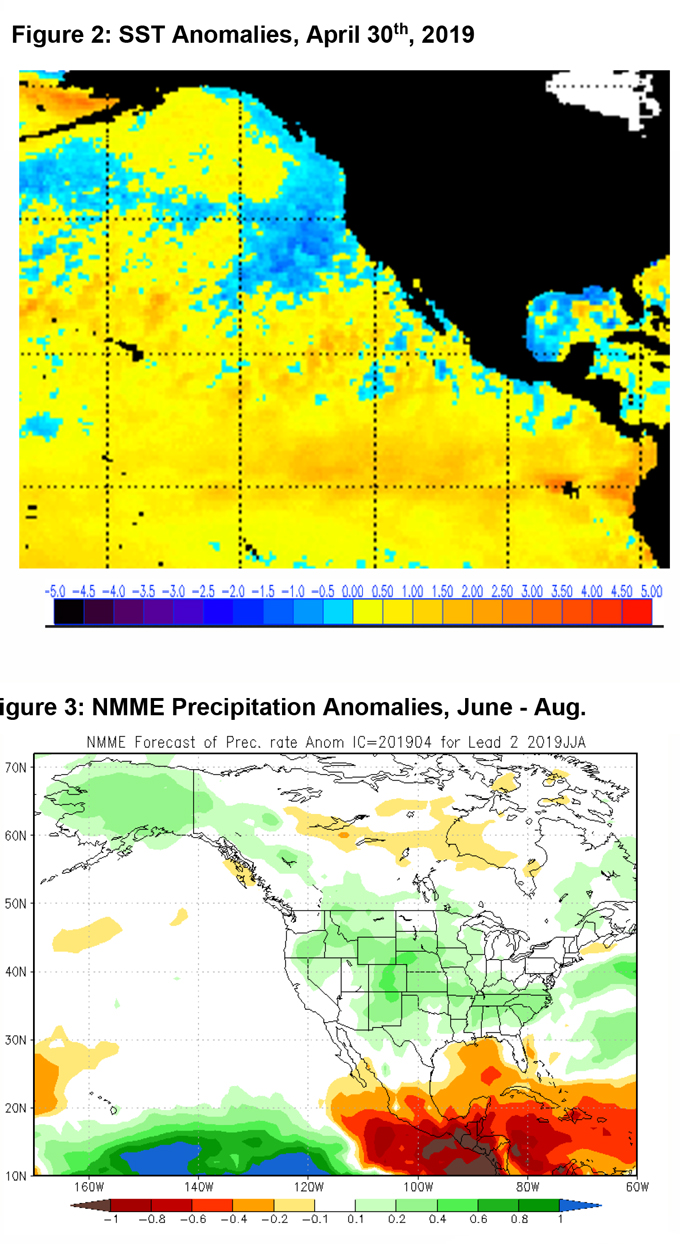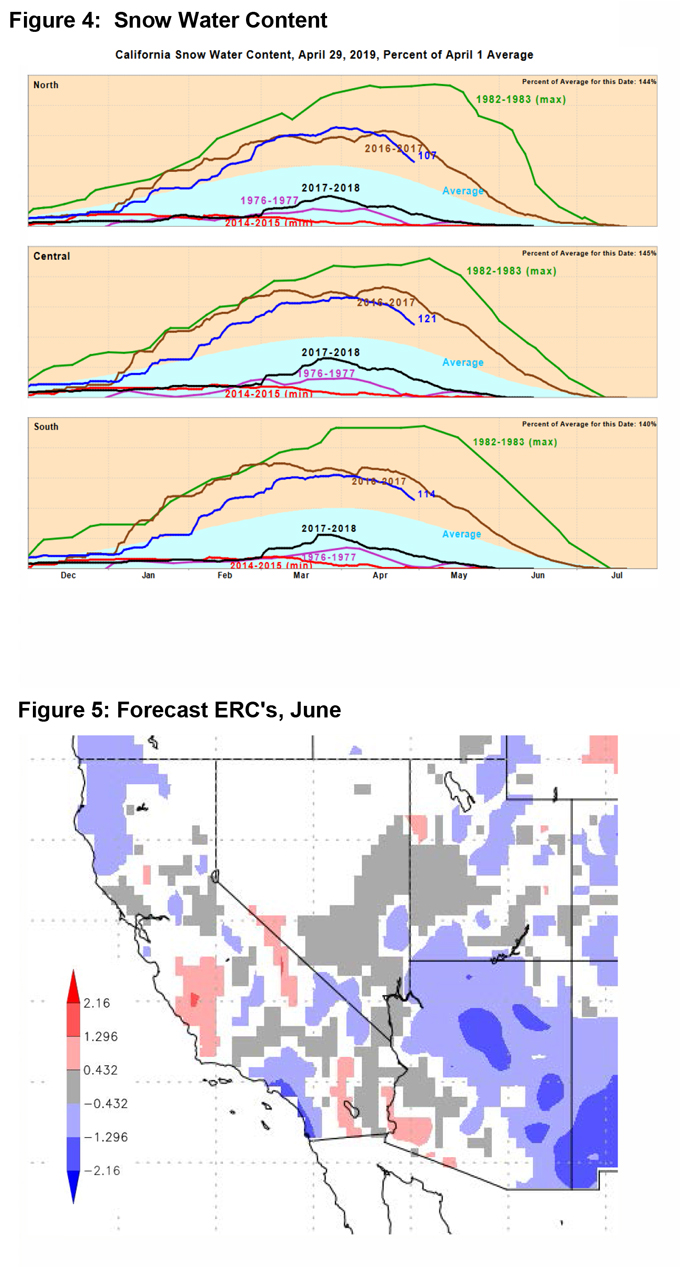Temperatures above normal, especially away from the coast.
Near to slightly below normal number of summer thunderstorms outside the deserts.
Large fire potential trending above normal this summer in the foothills and inland valleys due to tree mortality.
Greatest large fire potential may be in the Sierra Foothills again this summer.
Weather Discussion
May 2, 2019 - This past April was a quiet weather month, even by early spring standards. There were few notable storm systems, but trough passage was frequent enough to keep daily
 maximum temperatures near to slightly below normal the past 30 days (Figure 1, below). Precipitation finished below normal over most areas. Offshore wind events were largely absent in April, save for a few gusty north wind events.
maximum temperatures near to slightly below normal the past 30 days (Figure 1, below). Precipitation finished below normal over most areas. Offshore wind events were largely absent in April, save for a few gusty north wind events.A few “cutoff” low pressure areas have brought some spotty shower activity to the district recently and there is some indication this pattern may continue for a bit longer. This would serve to keep temperatures near to a bit below normal with some spotty rainfall in the forecast through the middle of the month.
Beyond then, long range models depict a wetter and warmer pattern across much of the western CONUS (Figure 3,below). There are some signs that upcoming monsoon season may be active with perhaps wetter and more numerous subtropical moisture surges than normal. The question is whether this moisture will move far enough west to include California in wet thunderstorm activity with any regularity.
The jet stream is still quite active for this time of year which has kept the district under west and southwest flow. This upper air pattern has shown little inclination of changing lately, and should this continue into summer, the axis of highest precipitable water may remain well east of the area. Therefore, we are expecting below normal summer monsoon-driven thunderstorm activity in July – August (outside the desert).

There are some pockets of remnant below normal SST’s over the Pacific Northwest, but the trend has been for the dissolution of the cold SSTs to our north. Most areas across the Pacific are trending to above normal SST’s which may translate into above normal temperatures the rest of the spring and summer. Frequent onshore flow periods may moderate high temperatures near the coast, but warmer than normal overnight lows – again due to warm SST’s – may result in daily mean temperatures above normal.
Offshore wind episodes should remain fewer than normal in number and severity heading into May. By June and July, offshore wind events tend to be nonexistent (last year’s event of July 6th notwithstanding).

FUELS AND DROUGHT OUTLOOK
Curing of seasonal grasses is nearing a conclusion over most of Southern California at the time of this writing. Central California should see curing wrap up a couple weeks later and by the end of May, all but the highest and most shaded areas should be cured out for the season. The grass crop is very heavy, which is to be expected after a wet winter. This year's grass crop should provide a highly receptive fuel bed by the summer.
The heavy grass crop under a dense coverage of dead trees will likely result in an optimal ladder fuel situation, allowing new starts to transition from the finer fuels near the ground into the heavier dead fuels, including drought and bug killed timber. This effect will be most pronounced again in the Sierra Foothills where tree mortality exceeds 50% in many front country areas.
The recent fire season of 2017 may provide a good analogue to the current weather/fuel situation. The water year 2016-2017 was extremely wet, especially in the Sierras where many areas experienced their second heaviest snowpack water content (Figure 4, below). Despite the wet conditions of winter, large fires still erupted by July, including the Detwiler Fire in Mariposa County.
Given the heavy grasses, a busy “grass fire season” appears imminent. These will be fast moving fires during hot or windy conditions which should last 2 or 3 burning periods. Once the heavier fuels dry out in June and July, large fire potential will climb over many inland areas as fuel beds are still dominated by dead vegetation in older growth areas. High alpine areas of the Sierras may not see much activity this year due to a late meltout and good subsoil moisture, but the rest of the area will likely see another active fire season.

Source: Predictive Services








